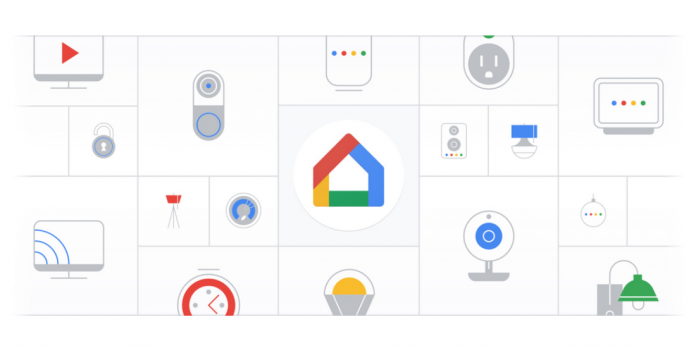Well, we’re here in a very connected, digital world with so much electronics around us to make life easier. But with some recent events, I started asking myself a few questions about smart home equipment, connected electronics and what they’re actually doing.
- Is this a mainstream product, or a niche market?
- Is the device making progress for the sake of it or actually solving a problem?
- Are we crossing a line beyond connectivity and automation, into laziness?
The benefits of automation
There really are so many options and benefits to automation that mainstream users can easily recognise. Everything from simplicity, efficiency and cost savings through to purposes many users don’t think of; such as making life “normal” for people with disabilities who cannot complete daily living tasks for themselves.
Smart Assistants
Smart assistants have been a strong part of the driver for this, since routines and automating needs at home became voice the stream of options has grown exponentially. But it’s not just what they can trigger, it’s also about what they can do on their own.
Daily routines such as time, weather and news are simple. Triggering your favourite radio station to play in the morning (particularly useful if you don’t have an “old school” radio) and with the integration to the major streaming platforms — Spotify, Audible, Apple Music, Google Books and YouTube Music — it’s also getting easier to both integrate your entertainment pathways AND get “trapped” in a platform through your investment.
For some though, for a variety of reasons, audio is the only media they are willing or able to consume. Having a smart assistant available means that a new world of media, news and general information is available to a cohort of users who otherwise would miss out.
Efficiency and Safety
The reality is that computers don’t make decisions, they do what they’re told based on a variety of parameters. So when it comes to efficiencies and safety, often automation is an outstanding pathway for that exact reason: Computers don’t make decisions.
They also don’t get tired, they don’t get emotional and — provided they’re programmed correctly — they don’t make mistakes. They can do the same function, on repeat until you tell them to stop, with minimal to no detectable change in work. In a home environment, the safety side is a bit harder to justify than perhaps an industrial setting, but there’s a lot to be said about efficiencies.
In the last two years, we’ve seen a rapid rise in items like robot vacuums. Now let’s be honest for a second – they’re really expensive, but man is it efficient if you’re at work all day, to come home and find a freshly cleaned floor because your little Roomba has done the job while you’re at work.
There’s plenty more to consider in this space, including power and cost savings that you can make with minimal investment. By reducing your power consumption, you’re also reducing your carbon footprint which is great for the environment.
IoT and Smart Things in your home
There are a lot of IoT devices that you can buy and install to make life easier and more convenient in a variety of ways. I personally use a Sensibo to control my air conditioner for a couple of reasons. The main one being that it’s great for energy use if we’re out all day. In Winter particularly, when solar isn’t producing much energy, it’s nice to turn the heater on as we’re heading home at the end of a day out. I’m sure in the knowledge that the house will be warm when we return, and we haven’t used valuable energy that could have gone into our Tesla battery to power the house overnight; saving us money.
But there’s another driver to this for us, most readers would be aware that our son is blind due to complications from a brain tumour in 2013. This means that simple things like turning on the aircon aren’t as easy for him:
- What if the remote isn’t where he thinks it is?
- What about setting the mode and temperature?
Simply turning the aircon on, setting the mode, fan speed and temperature can be done by voice.
Some of our team have their garage doors and/or gates linked to Google Assistant, using an Assistant voice command, or a routine as long as you’re not using Android Auto of course, because why would Google support Assistant Routines on their driver safety focused platform…
So where is the line between convenience and laziness?
I’d love to draw a line for you right now, but there are too many factors involved based on individuals and their personal circumstances. There are clearly devices and automation options that cross the line into laziness. If you choose to invest in the hardware, all of a sudden there’s no need for you to stand up to turn the lights off, lock your door, check your mailbox or control any form of entertainment in your home.
There are absolutely some really cool features and functions that can be used via the smart assistant options. But there’s also a line in there somewhere between automation, convenience and laziness that we’re probably crossing without realising it.
Personally, the questions I usually ask myself before introducing any automation into my life are:
- Will this make life better — short or long term — for me or my family?
- Will this item make a difference to the safety or security of my home?
- Does this have the potential to save me money?
If there isn’t at least one yes in there, then it’s a pass but I can understand why people continue on the pathway. In complete honesty, I’m absolutely guilty of continuing even without those “yes” answers – because I can!
So with that in mind, why are you adding automation and smart home hardware to your setup? Is it because your life is better, safer, does the items save you money? Or are you adding these items because you can and it’s helping achieve something you just don’t want to do anymore?
Share your feeling on automation in the connected age we’re living in, is it always beneficial, or is there an element of laziness to the use of technology?








